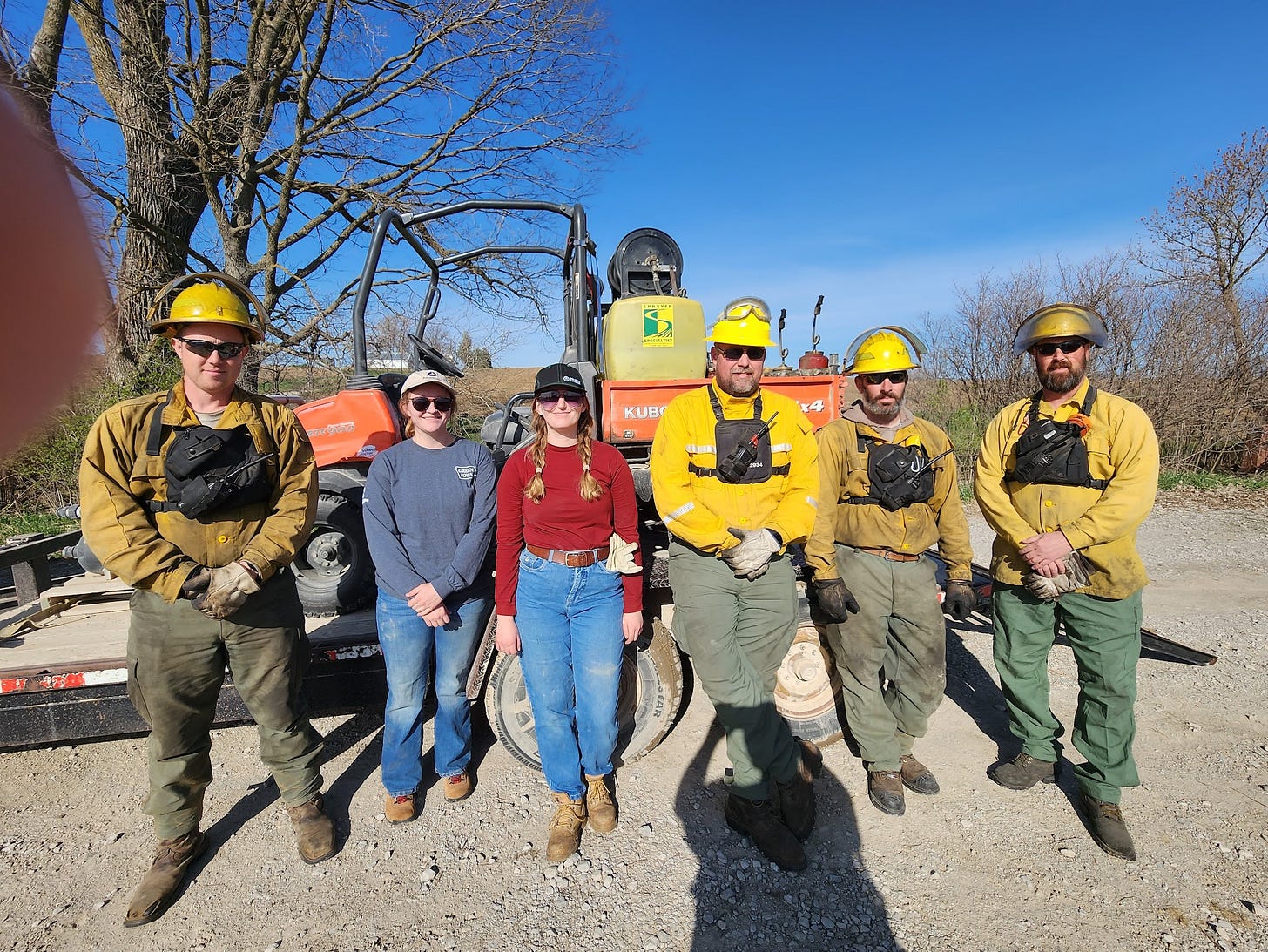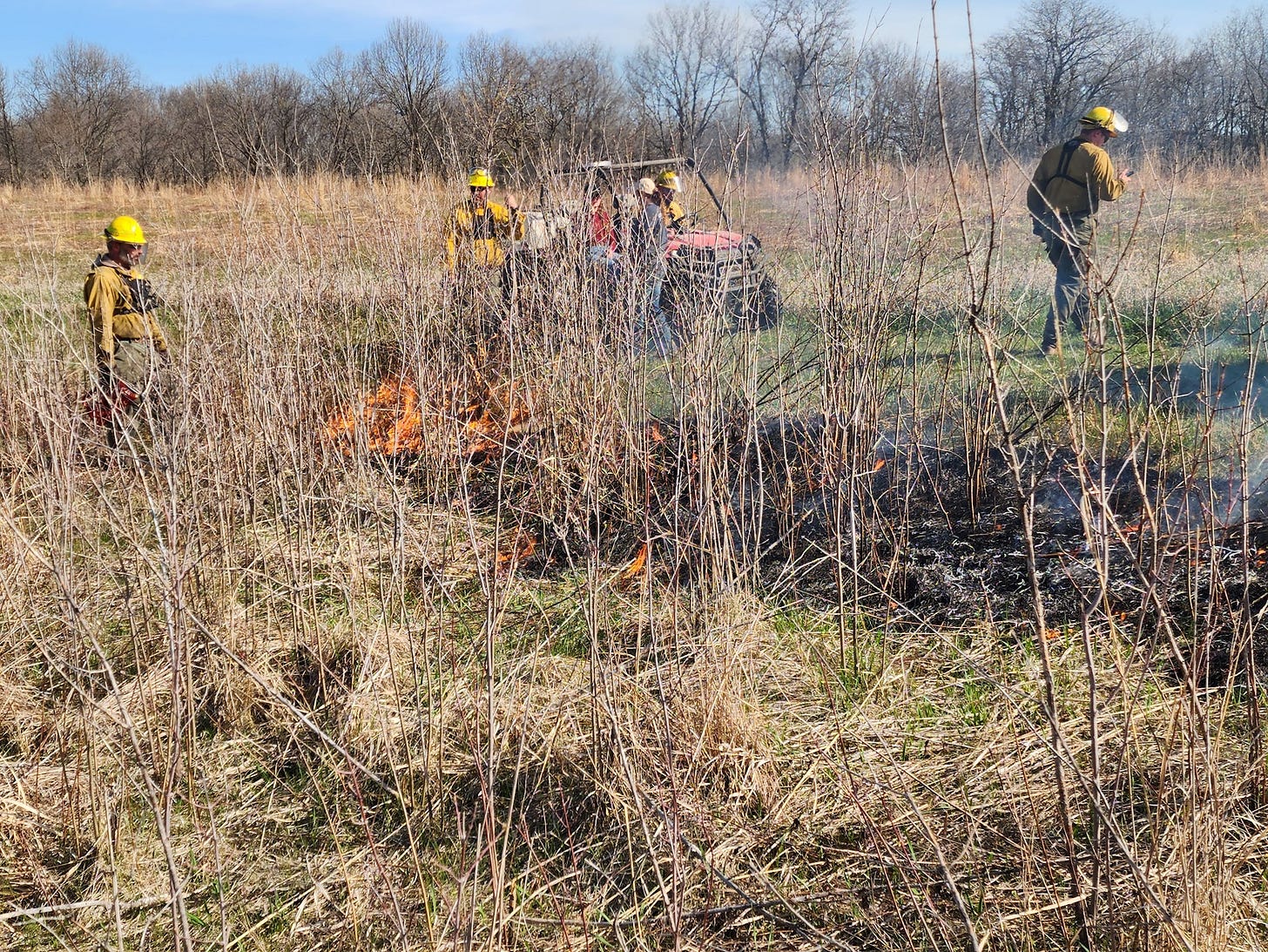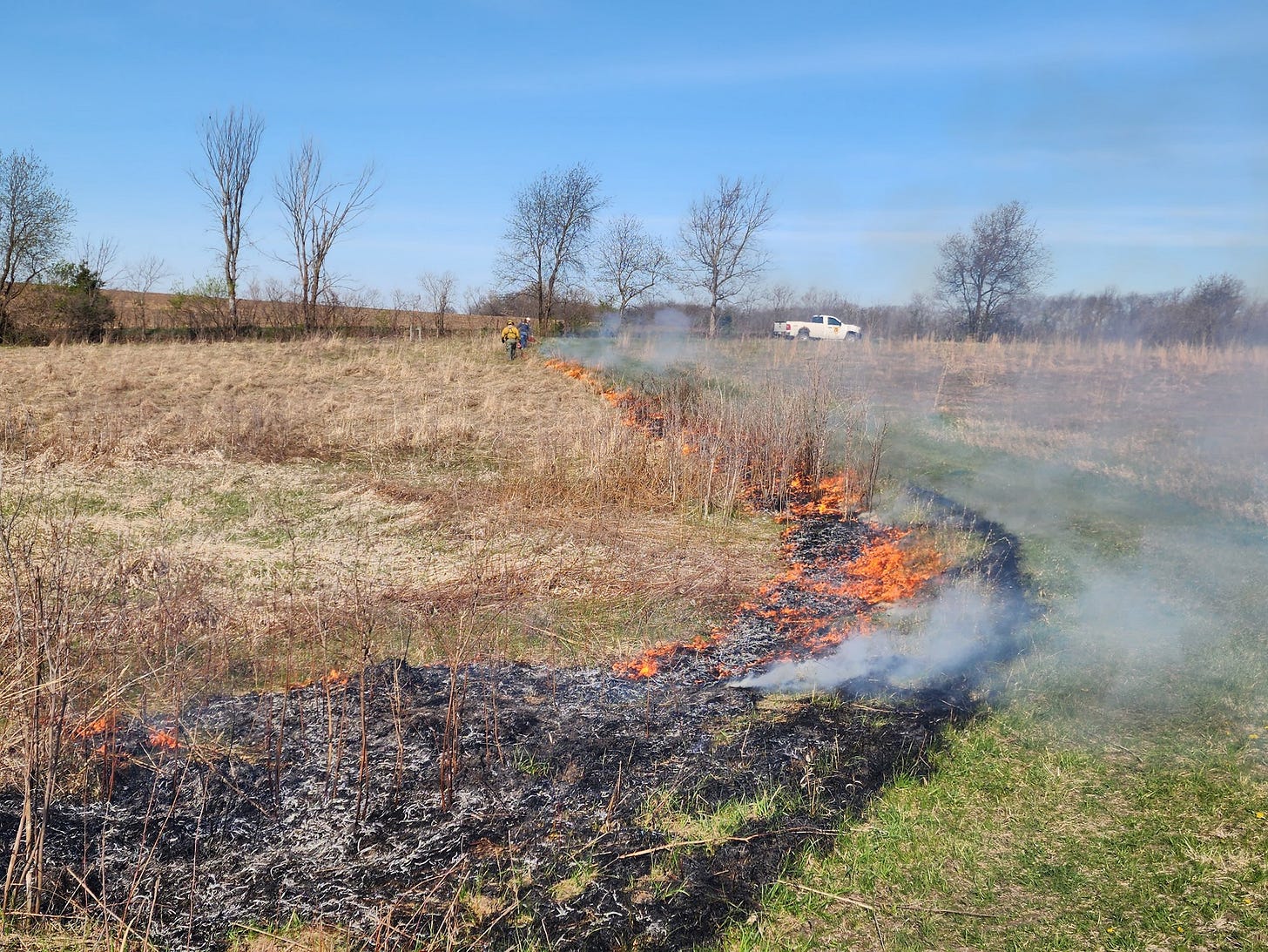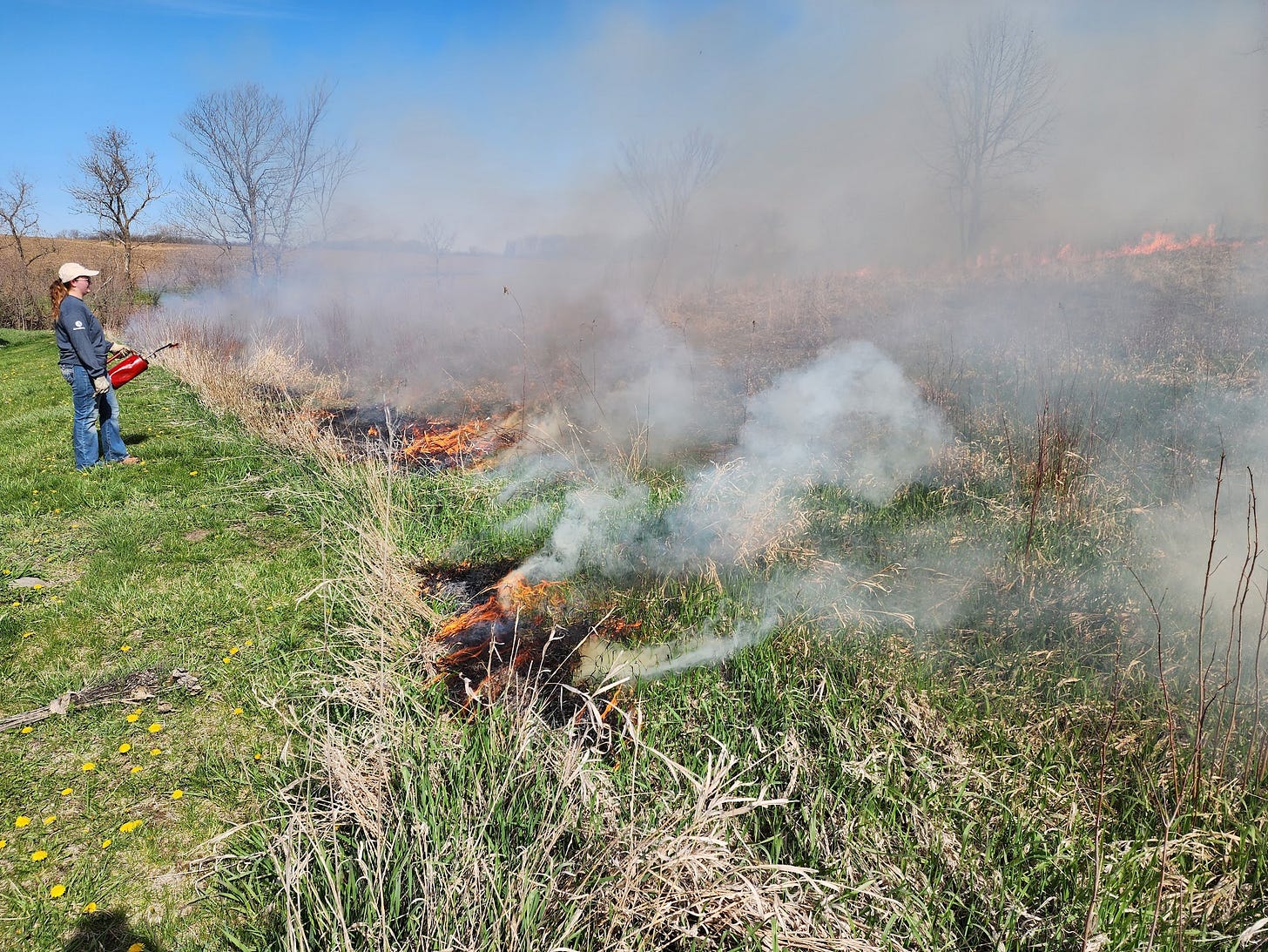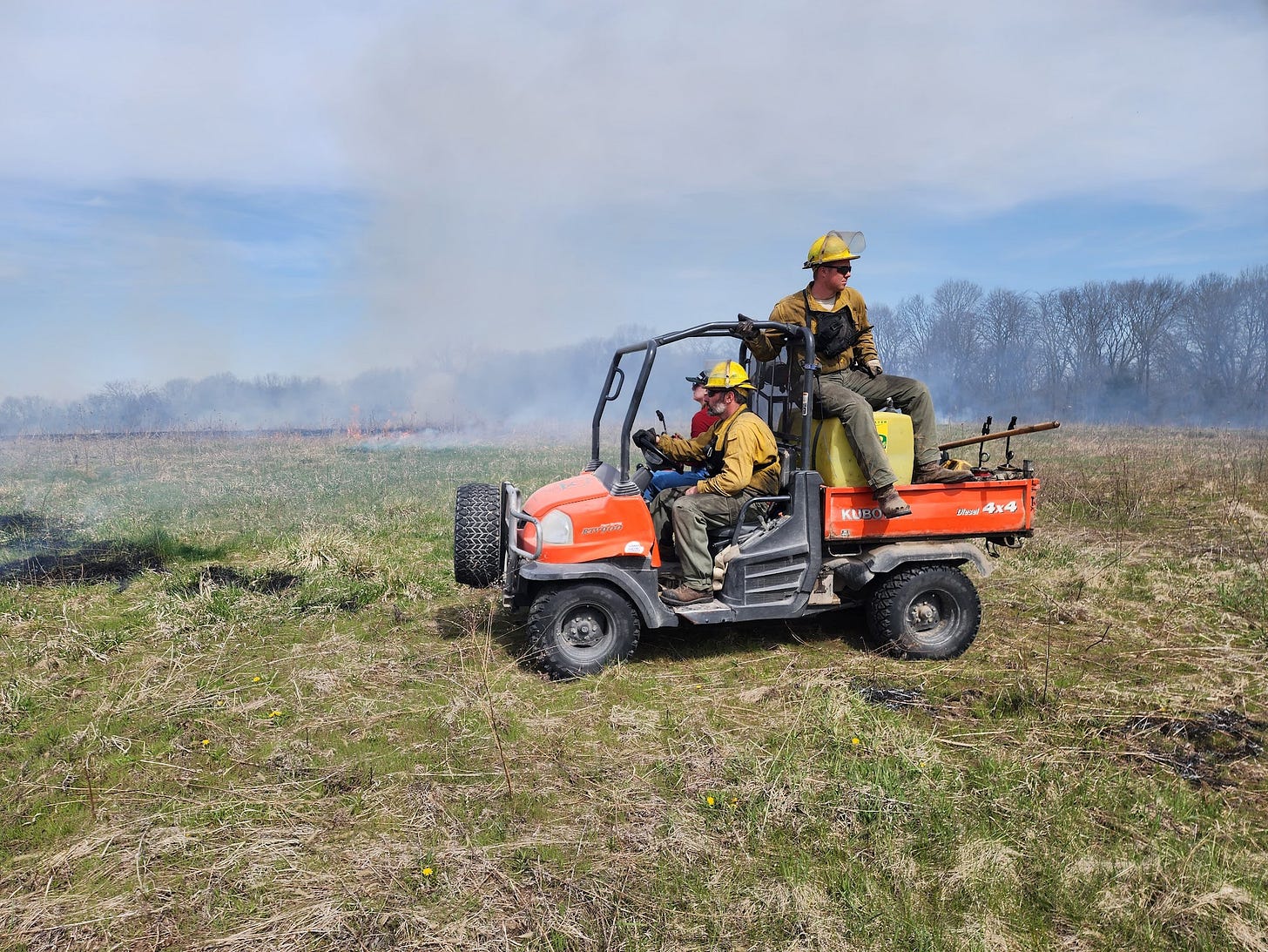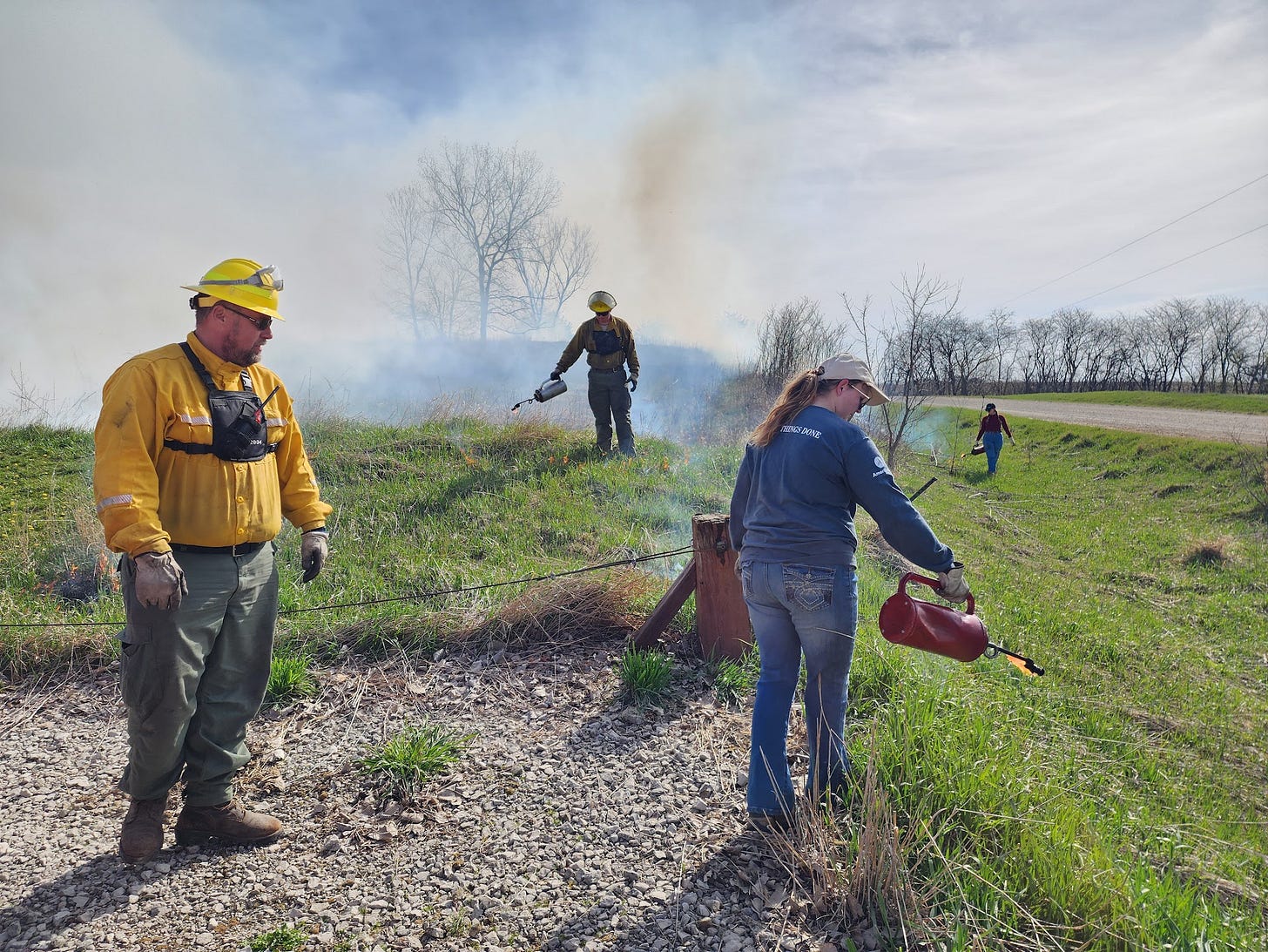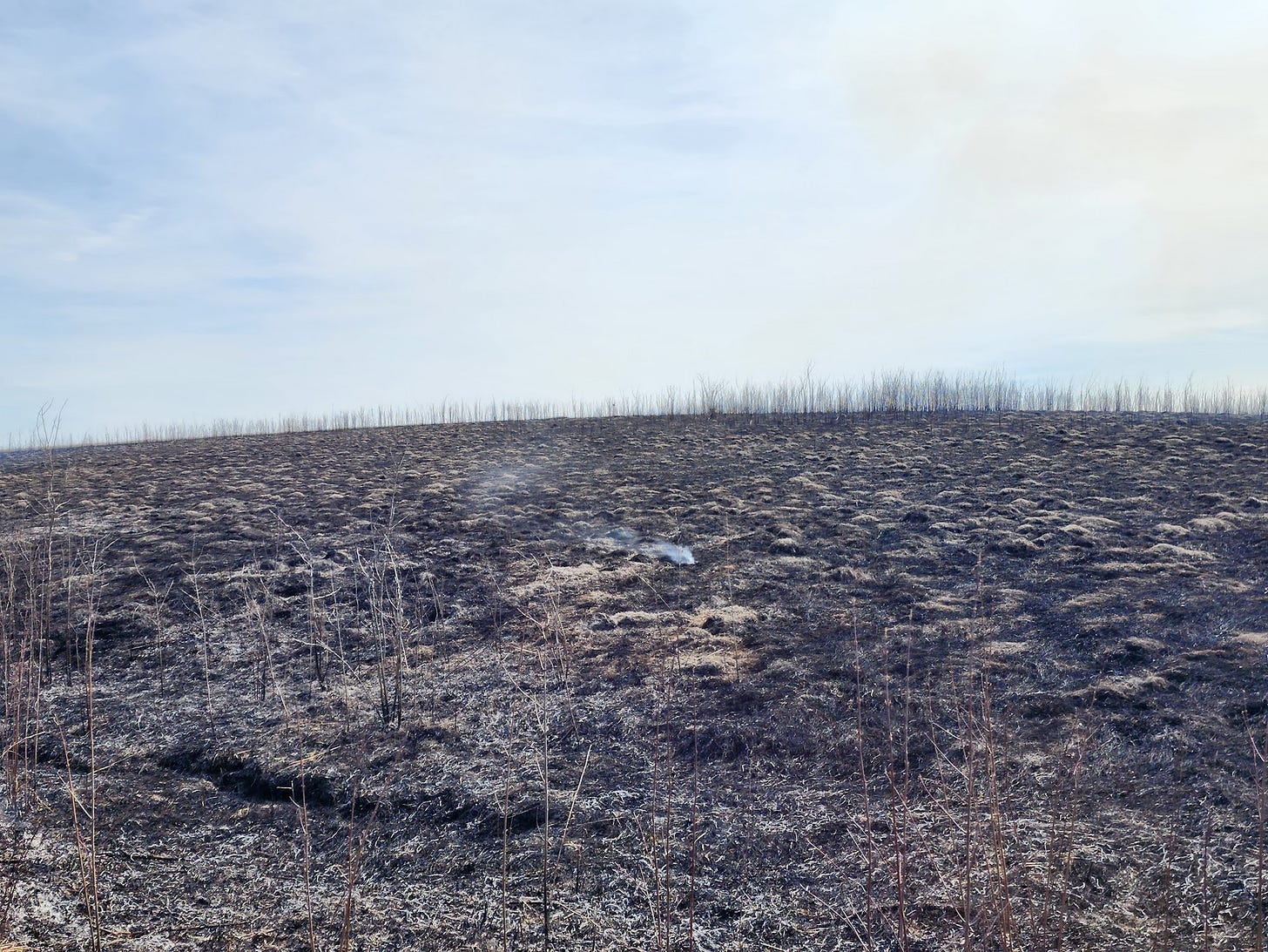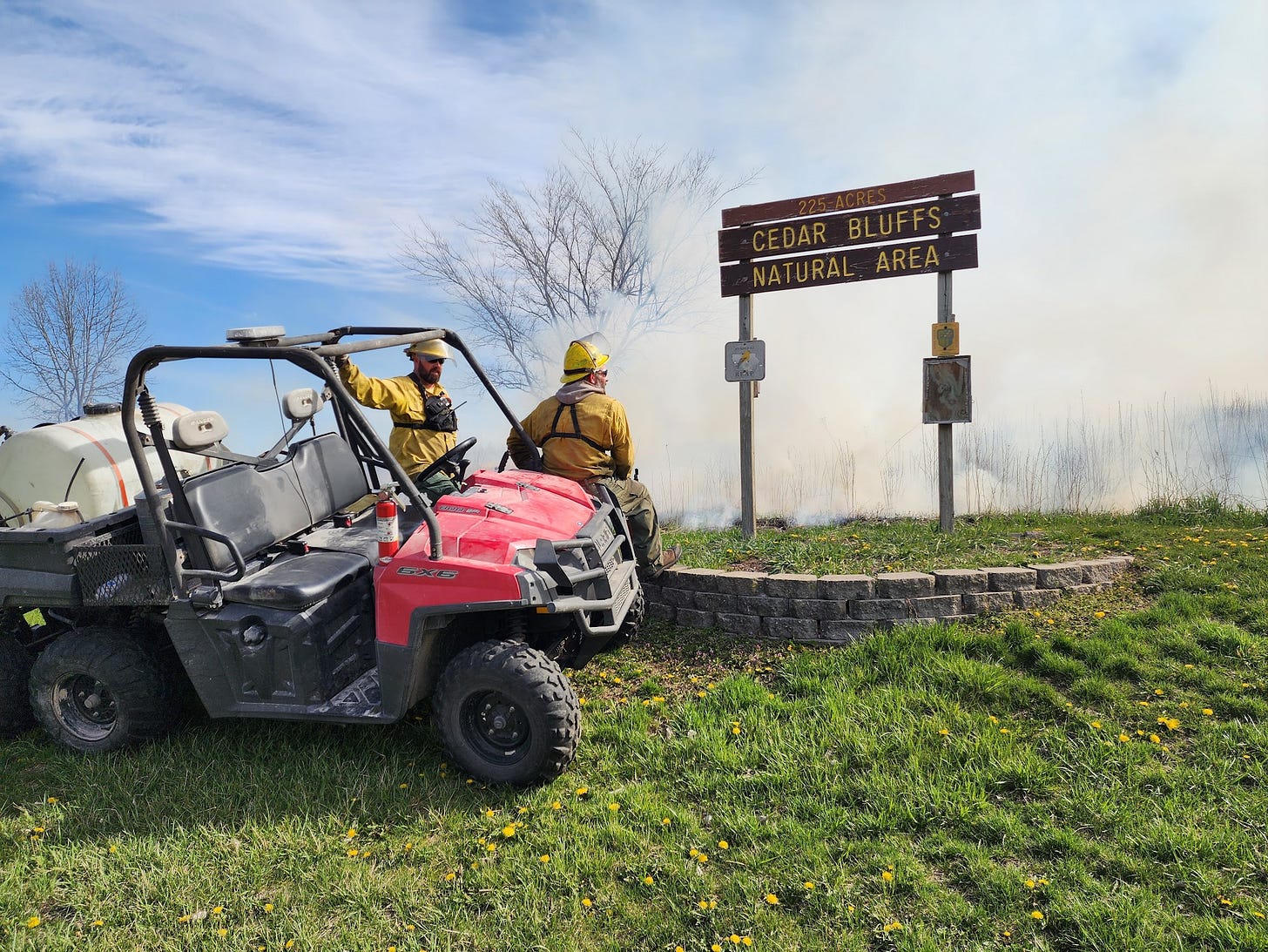Violet the Dog and I spent yesterday morning observing a controlled burn at Cedar Bluffs Natural Area. Chris Clingan, Director of Mahaska County Conservation asked me to to tag along if I wanted to—and I was delighted. After a recent excellent volunteer training by Mahaska County Naturalist Laura DeCook, I’m the official volunteer park steward.
Regular readers will know I’ve been walking Cedar Bluffs off and on for nearly 20 years, and that when Covid hit I went out every day. I still try to walk every day except when I can’t get there in the snow or if the rain is coming down so hard I might get my phone wet (I like taking photos!).
My attitude is “there’s no bad weather—there’s only bad clothing.”
Well, I aspire to that attitude anyway…
Along with Chris, the crew working the burn were Mahaska County Park Rangers Tommy Van Renterghem and Jason Ryan, along with Roadside Manager Ben Hoskinson. Also there to help were Aubrey Brown and Kristine Janette with Green Iowa Americorps. Green Iowa Americorps is “Iowa’s Community Leader in boots-on-the-ground energy and environmental services, and they are organized by the University of Northern Iowa's Center for Energy and Environmental Education.”
Above is my bad photo of the crew with my big finger in the way and my lumpy shadow in the foreground. Regardless, you can see the dedicated crew ready to work.
Before everyone arrived, I asked Chris to explain what was happening and why:
We're going to be doing some prescribed fire on our prairie reconstructions. And the reason that's important is because Iowa historically was a fire-sustained ecosystem, and fire is just as important as the rain and the sunshine in terms of the prairie ecosystem. So it plays a vital role in keeping the prairies in good health, and good shape, and keeping the woody and invasive vegetation out of the prairies.
And it invigorates growth, increases biodiversity in the prairies, and it's a very effective management tool. It's pretty low cost and you get a lot of bang for your buck. So we're going to be burning off some prairie today and it'll be interesting to see how it responds later on in the growing season.
And so you have different groups helping out today. Would you mind mentioning them?
Yeah, so we got the Green Iowa Americorps. They're part of the partnership here in Mahaska County with William Penn University, the City of Oskaloosa, the Soil and Water Conservation District, and the Mahaska County Conservation Board. They're the boots on the ground and they really get a lot of stuff done for us. They work a lot of special projects around the county and then we're going to have a couple of rangers from the Mahaska County Conservation Board and possibly Ben Hoskinson with the secondary roads. He's the Integrated Roadside Management Director.
And so what is your strategy, starting in one place or starting in a bunch of places?
We'll start at one place at a time. We'll assess the situation, and check the fire breaks, which the guys do a really good job on the fire breaks. They look nice and green. So it'll help us keep things under control, but we'll basically go downwind and we'll set an anchor point downwind and then we'll start laying fire line around the individual parcels that were going to burn today. And once we get a sufficient black line, then we'll ring it, which basically means we put a ring of fire all the way around it and then the head fire kind of wrap things up fairly quickly. There is a lot of green cool season grasses that are growing right now, which is good because we don't want because they're non-native. So we want to impact them as negatively as possible. So it'll be smoky. It'll probably be a little bit slower burn because of all the green cool season grasses, but it's gonna do a lot of good for the prairie out here.
Chris tells me that so far this season, the crew has spent 10 days burning and have burned over 400 acres.
While the young women with Green Iowa Americorp are experienced hands helping with a great many projects for the county, they, like me, were inexperienced with burning prarie. I was not only impressed with them but also with all of the Mahaska County staff, who are natural teachers. Staff knew that the only way to learn in this situation is to learn by doing, and they made that happen whenever possible. Check out the teaching in the above video, for example.
I think that those of us who love our natural world like all of us at Cedar Bluffs Recreation Area yesterday do, know that nature yearns to teach us, and we yearn to teach others what she teaches us.
I was so impressed with everyone working at Cedar Bluffs Recreation Area yesterday. There was a wonderful camaraderie—lots of storytelling, jokes, friendly teasing, and sharing of our love for nature. We talked about everything from our kids, our future plans, hunting, the joys (or not so much) of ice fishing, and how to best cook fish, among many other things. Mahaska County should be proud to have such a knowledgable and dedicated group of men and women doing their best to make the county and surrounding areas a better place to live and recreate.
At one point, one of the Mahaska County crew said “don’t talk about it, be about it,” and at that moment, I knew, surely knew, that these “boots on the ground people” are my kin. And I’m honored to be among them and to learn from them.
May all of my mornings, and yours, be so well spent.
If you enjoy Cedar Creek Nature Notes, I encourage you to subscribe to my friend Larry Stone’s “Listening to the Land.” It’s fantastic. Larry has forgotten more than I will ever know about our outdoor world.
For another glimpse of the wonders of the Iowa outdoors, Diane Porter’s My Gaia is another Substack I enjoy. It’s full of observations on nature and is ripe with wisdom.
And don’t miss Al Batt’s Substack at Al’s Substack. Al Batt of Hartland, Minnesota is a writer, speaker, storyteller, and humorist. Al writes humor and nature columns for many newspapers and does regular radio shows about nature. He writes several popular cartoon strips that are syndicated nationally and is the author of the book, "A Life Gone to the Birds." He is a columnist for "Bird Watcher’s Digest" and “Watching Backyard Birds,” and writes for several magazines and books.
I’m a member of the Iowa Writers Collaborative. Please sample the talents of my fellow collaborative members. If you can afford to be a paid subscriber, that would be great. If not, the vast majority of content is free. And here is a link to the Iowa Podcasters’ Collaborative, should you be interested. Check out my Substack Deep Midwest: Politics and Culture if you aren’t already a subscriber.
This column will always be free, but if you can’t afford a subscription and would like to “buy me” a cup of coffee or lunch, my Venmo account is @Robert-Leonard-238. Thanks!





